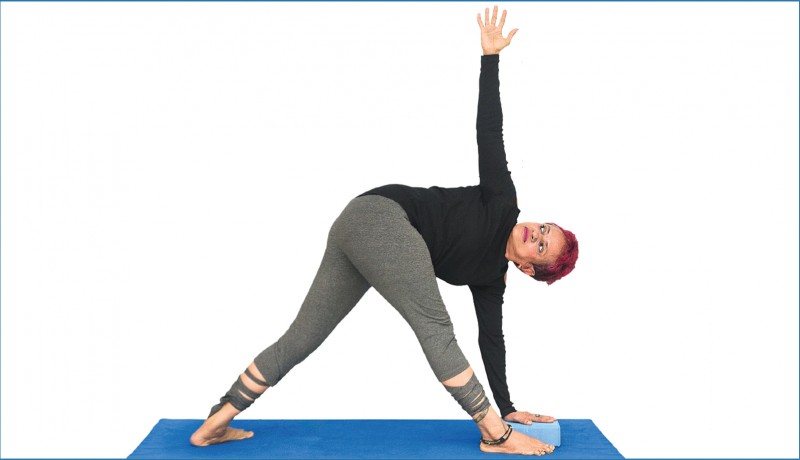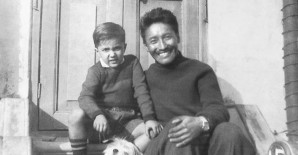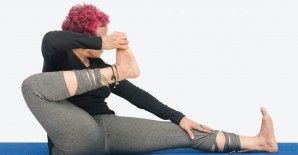
Columns

Shameem Akthar recommends ways to relieve tension on the upper back and ease shoulder pain
Shoulder pain is a common problem that afflicts all age groups. Unfortunately, it is taken less seriously than other problems of the back and torso, with the lower back often getting more attention. Shoulder pain is often normalised as part of the travails of living, treated with the same scant attention we accord a common cold. But, like the latter, it can be chronic, repetitive, disrupt normal life and progressively get worse in the absence of care.
The problem is compounded by the fact that shoulder pain can occur owing to a cluster of causes (when it is not triggered by a specific accident). This makes it difficult to curb it at the source. The triggers may include lifestyle (if sedentary) or postural defects that arise from professional demands (as with makeup artists, hairstylists, surgeons, cooks, sportspersons); excessive use of gadgets like the laptop, where the body remains scrunched up in a particular way; how you sleep; and even your personality type (whether you thrust your chest out aggressively or crouch it inwards in a timid fashion).
Though medication to relieve pain may help, this should never be a long-term solution. Optimally, your problem should be diagnosed by an expert and you should take appropriate remedial measures as suggested. However, the most important way to find relief is to self-engage, by actively working the muscles of the shoulders in a remedial fashion. Ideally, you should have consulted a physiotherapist for a set of poses (most are yoga-related) and you need to make them part of your life on a daily basis. Even when the pain leaves, you must continue with the practice to prevent future episodes.
Using the right pillow (there are several medically prescribed brands available) and mattress will also help in cases where the pain is owing to your posture while sleeping. If your work requires you to be seated hunched up for long, you must take timed breaks to relieve the tension in the upper back. The problem may not be apparent while working but will erupt later. The best way to do this is to use reminder alerts on your phone or gadget, so you get to move about. Therapeutic postural correcting braces are also available and may be worn to create a muscle memory for the correct posture.
Though martial arts have always used the idea of muscle activation to relieve pain, in therapeutic sciences it is now coming into its own as the right way to deal with chronic pain. More than the movement itself, it is how you engage the muscles, by deliberately focusing on them, extending and contracting them as required. These do not need to be elaborate poses or practices, but simple movements. For instance, just holding your arms at shoulder level, and extending them as if pressing into a wall, will activate muscle groups. In shoulder pain, in fact, most movements that offer relief are simple.
A regular practice of yoga is the best rehab and ‘prehab’ in shoulder pain episodes. Therapeutic schools of yoga suggest simple ones, like the prayer pose (pranamasana), where the palms are pressed against each other in front (and behind the back in an advanced version), or shoulder rolls (skanda chakra), which have different variations, the mountain pose (tadasana) and cow-face practice (gomukh asana). In some of these, you may not be able to fully extend the arm initially. In that case, you can use a yoga belt; if that is not available, a simple shawl or waist belt may be used.
Those with a regular yoga practice may include the triangle pose (trikonasana) and all its variations; angle pose (konasana) and its variations; mountain pose (parvatasana) and its variations; seated twists like the half-spinal twist pose (ardhamatsyendrasana); Sage Marichay’s pose (marichayasana), Sage Bharadwaja’s pose (bharadwajasana); chest openers like the pigeon pose (kapotasana) in its modified version with props; and the bow pose (dhanurasana) with suitable modifications according to your need and with expert advice.
YOGIC MOVES
Twisted triangle pose (parivritta trikonasana)
Stand with feet a metre apart, right foot turned to the right side, left turned inwards. Ensure heels are in one line. Arms should be held out at shoulder level. Inhale. Exhale. Twist to the right side, placing your left palm beside the right foot (use a yoga block if you are not able to reach the ground). Point your right hand straight up. Twist to turn to look at raised hand. Hold for a few seconds, breathing normally. Release by returning to your original position. Repeat for the other side. Advanced practitioners can take their hand over the foot for a more challenging modification.
Points to note: Avoid if you suffer from vertigo, because this pose requires balance. Keep your eyes lower if you are still struggling with balance. Try to keep your legs and arms straight throughout.
Benefits: This pose helps with most spinal issues. It is used as therapy in many chronic ailments. It aids digestion because of the pressure at the abdomen and improves balance and tones the limbs.
KNOW YOUR KRIYA
Victory breath (ujjayi pranayama)
Make a soft hissing sound at the throat (it should not be harsh, loud or irritating to the throat) as you inhale and exhale. Try to do the two movements—inhalation and exhalation—equally by counting. Do a few rounds. (In the image, the hand at the throat is used representatively, to indicate where slight pressure may be applied internally.) The hands should ideally be in a mudra while doing any pranayama; the eyes remain shut. Ideally, nine to 12 rounds may be done, morning and night.
Benefits: This kriya is very healing and used to treat spinal and back issues. It calms the mind and releases the psychosomatic triggers that often cause shoulder tension. It is also useful in lowering blood pressure.
Shameem Akthar is a Mumbai-based yoga acharya. If you have any queries for her, mail us or email at contact.us@harmonyindia.org. (Please consult your physician before following the advice given here)
Photos: Haresh Patel Featured in Harmony — Celebrate Age Magazine November 2018
you may also like to read
-
Mental workout
Mukul Sharma tells you how to keep those grey cells ticking Everyone will ultimately lose his or her brain….
-
Helpline
Dr Harshbir Rana answers your queries on personal and social issues related to ageing, elder care and intergenerational relationships ….
-
Off the cuff
Raju Mukherji pays tribute to his first hero, Tenzing Norgay, an exemplary mountaineer Darjeeling, 1955. Dr ‘Pahari’ Guha Mazumdar….
-
Yoga RX
Shameem Akthar shows ways to control debilitating ankle pain through regular practice Ankle pain is so common and prevalent….








